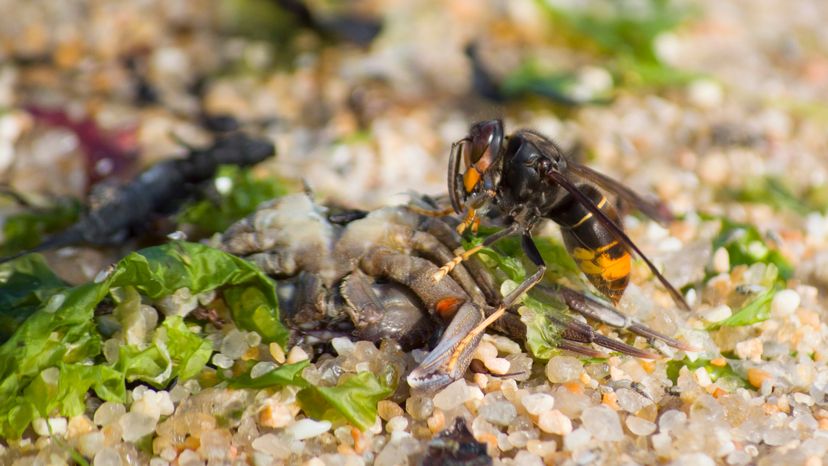Professional Hornet Nest Removal Services
When dealing with large or particularly challenging hornet nests, professional removal services may be necessary. This is the safest way to remove a hornet nest, especially if it is particularly large or in a hard to reach area.
If you're allergic to wasp or bee stings or if you don't have the appropriate equipment, don't attempt to get rid of the hornet's nest yourself — call a professional [Source: Pest Control Canada].
Preventing Hornet Stings: Protective Measures
If you decide to take care of the problem yourself, locate and mark the nest entrance during the day, but take all action at night when the insects are likely to be inside the nest and less active.
Wear protective clothing like boots, coveralls, heavy gloves and veiled headgear when approaching a hornets' nest to avoid insect stings. Tape down your collar and the cuffs of your pants and sleeves.
Chemical Repellents and Insecticides: When and How to Use Them
The easiest and most effective way to get rid of a wasp nest is by using a can of insecticide that is specifically designed for stinging insects. The best time to tackle hornets is at night when they're less active and all in the nest. Before you start, make sure to wear protective clothing like long pants, a long-sleeved shirt, socks, gloves, and goggles for safety.
These sprays can reach far, so you don't have to stand too close to the nest and risk a hornet sting. Be careful about the wind direction to avoid getting the spray in your face. Use a flashlight to see better and spray the nest as the instructions on the can suggest. Always watch out for hornets that might swarm out and be ready to leave quickly if they do.
DIY Hornet Traps and Their Effectiveness
While you can buy lure traps and hang them wherever there is a hornet infestation, you can also just make your own! Follow these steps to create a cost-efficient and effective DIY wasp trap:
- Materials Needed: You'll need a plastic bottle (like a 2-liter soda bottle), sugar, vinegar, dish soap, and optionally some meat (like fish or liver).
- Prepare the Bottle: Cut the plastic bottle in half. The top half will act as a funnel.
- Create the Bait: Mix sugar and vinegar in the bottom half of the bottle. The sugar will attract hornets, while the vinegar repels bees, ensuring you're specifically targeting hornets. Add a few drops of dish soap to break the surface tension of the liquid, so hornets can't escape once they're in.
- Set the Trap: Place the top half of the bottle upside down into the bottom half, creating a funnel. If using meat as bait, hang it just above the liquid line inside the trap.
- Place the Trap: Hang the trap with wire or string in an area where you've seen hornet activity. It's best to place it away from high human traffic areas to avoid attracting hornets towards these spaces.
This trap works by luring hornets with the bait and then trapping them inside the bottle from which they cannot escape. Remember to check and empty the trap regularly. Although traps won't eliminate hornets altogether, aggressive trapping can significantly reduce their numbers [Source: The Spruce].


